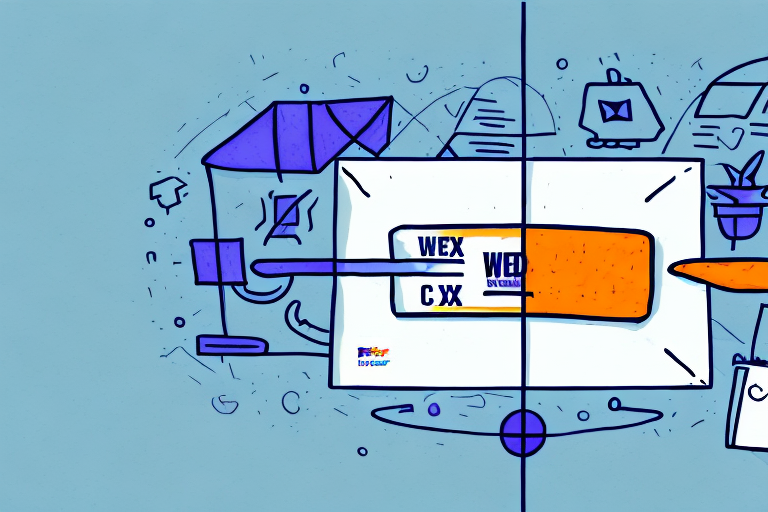Comprehensive Guide to FedEx Shipping Rates for 60-Pound Packages
Shipping items weighing 60 pounds or more can be a complex process, particularly when navigating through the various shipping rates and options available. Understanding how FedEx calculates shipping rates for heavy packages is crucial for both businesses and individuals. This guide delves into the factors influencing FedEx shipping rates for 60-pound packages, methods to calculate these rates, strategies to reduce shipping costs, and comparisons with other major carriers.
Key Factors Influencing FedEx Shipping Costs
Several elements determine the cost of shipping a 60-pound package with FedEx. Being aware of these factors can help you make informed decisions to optimize your shipping expenses.
1. Distance Between Origin and Destination
The distance your package needs to travel significantly impacts the shipping rate. FedEx uses a zone-based system where higher zones correspond to longer distances, resulting in increased costs. For detailed zone information, visit FedEx Shipping Zones.
2. Selected Shipping Service
FedEx offers various shipping services, including FedEx Express and FedEx Ground. Express services provide faster delivery times but come at a higher cost compared to Ground services.
3. Package Dimensions and Weight
Both the size and weight of your package influence the shipping rate. FedEx employs dimensional weight pricing, which considers the volume of the package. Efficient packaging is essential to minimize costs associated with larger dimensions.
4. Package Value and Insurance
The declared value of your package affects the shipping rate, especially if you opt for additional insurance coverage. Higher-value items incur higher shipping fees to cover potential risks.
5. Seasonal Demand and Peak Periods
During peak seasons, such as holidays, increased demand can lead to higher shipping rates and potential delays. Planning your shipments ahead of these periods can help avoid elevated costs.
Calculating FedEx Shipping Rates for 60-Pound Shipments
Accurately calculating FedEx shipping rates ensures you budget effectively and choose the most cost-efficient shipping method for your needs.
Using the FedEx Rate Calculator
The FedEx Rate Calculator is an essential tool for estimating shipping costs. By inputting the package’s weight, dimensions, origin, and destination, you receive an accurate cost estimate tailored to your specific shipment.
Consulting FedEx Representatives
For complex shipping needs or bulk shipments, speaking directly with a FedEx representative can provide personalized rate quotes and potential discounts.
Considering Shipping Speed and Delivery Location
The urgency of your shipment and its delivery location play critical roles in determining the shipping rate. Faster delivery options to remote areas typically incur higher costs.
Understanding FedEx Shipping Zones and Their Impact
FedEx organizes shipping destinations into various zones based on geographic regions. Understanding these zones is vital for predicting shipping costs and delivery times.
Domestic and International Shipping Zones
FedEx’s zone system categorizes destinations into domestic zones within the United States and international zones worldwide. Each zone has its specific rate structure, influencing the overall shipping cost.
Shipping Options Within Zones
Within each zone, FedEx offers multiple shipping options, such as overnight, standard, and economy services. Selecting the appropriate option based on your delivery timeframe can optimize costs.
Comparing FedEx Ground and Express for 60-Pound Packages
Choosing between FedEx Ground and Express services depends on your budget and delivery requirements.
Cost Differences
FedEx Ground is generally more affordable for heavy shipments like 60-pound packages, especially for non-urgent deliveries. In contrast, FedEx Express offers expedited shipping at a higher cost.
Delivery Timeframes
FedEx Ground typically delivers within 1-5 business days, depending on the distance, whereas FedEx Express can deliver overnight or within 2 business days for most locations.
Suitability for Different Shipment Types
FedEx Ground is ideal for bulk shipments and non-time-sensitive items. FedEx Express suits urgent deliveries and high-value items requiring faster transit times.
Strategies to Save on FedEx Shipping Costs for Heavy Packages
Implementing cost-saving measures can significantly reduce your shipping expenses.
1. Use Standard-Sized Boxes
Opting for standard-sized packaging helps avoid additional dimensional weight fees. FedEx provides free packaging supplies designed to minimize size-related costs.
2. Leverage Volume Discounts
Consolidating multiple shipments or committing to regular shipping volumes can qualify you for volume discounts, lowering the per-package shipping cost.
3. Opt for Ground Shipping
Choosing FedEx Ground over Express services can result in substantial savings, especially for heavy packages where speed is not a priority.
4. Utilize FedEx Online Tools
Using FedEx’s online shipping tools to create labels and schedule pickups can save both time and money compared to in-person drop-offs.
Additional Fees to Consider with FedEx for Heavy Shipments
Understanding potential additional fees helps in budgeting your shipping costs accurately.
Residential Delivery Fees
Shipping to a residential address incurs higher fees compared to commercial destinations. Even home-based businesses are subject to residential delivery charges.
Fuel Surcharges
FedEx applies fuel surcharges based on current fuel prices and the shipment’s weight and distance. These surcharges fluctuate monthly and are added to the base shipping rate.
Dimensional Weight Fees
If your package’s dimensional weight exceeds its actual weight, FedEx charges based on the dimensional weight. Efficient packaging can help mitigate these fees.
Comparing FedEx Shipping Rates with Other Major Carriers
Evaluating FedEx against other carriers ensures you choose the best option for your shipping needs.
Cost and Service Comparison
Compare shipping rates, delivery times, and service offerings of major carriers like UPS and USPS alongside FedEx to determine the most cost-effective and reliable option.
Customer Service and Support
Consider the quality of customer support, ease of resolving issues, and overall reliability of the carrier. Positive customer service experiences can enhance your shipping process.
Additional Features and Services
Assess value-added services such as package tracking, insurance options, and specialized handling for fragile or high-value items that each carrier offers.
Negotiating Better Shipping Rates with FedEx
For businesses with regular shipping needs, negotiating favorable rates with FedEx can lead to significant savings.
Analyze Your Shipping Volume
Understanding your shipping patterns and volumes allows you to present a strong case when negotiating rates with FedEx representatives.
Establishing a Shipping Contract
Entering into a contract with FedEx based on your shipping frequency and volume can secure discounted rates and tailored services.
Utilizing Flat Rate Options
FedEx offers flat rate boxes for certain package sizes, providing a fixed shipping cost regardless of weight or distance, which can be economical for heavy shipments.
Understanding Dimensional Weight and Its Impact on Shipping Costs
Dimensional weight pricing ensures that shipping costs reflect both the size and weight of a package, preventing oversized but lightweight items from being shipped at low rates.
Efficient Packaging Strategies
To minimize dimensional weight fees, use appropriately sized packaging and lightweight materials. Compressing the contents to reduce package volume can lead to lower shipping costs.
Impact on 60-Pound Shipments
For 60-pound packages, optimizing both weight and dimensions is crucial. Even slight reductions in size can lead to significant savings by decreasing the dimensional weight.
Conclusion
Shipping heavy items with FedEx requires a comprehensive understanding of the various factors influencing shipping rates. By considering distance, service type, package dimensions, and additional fees, you can accurately calculate and optimize your shipping costs. Implementing cost-saving strategies, negotiating better rates, and comparing services with other carriers further enhance your ability to manage shipping expenses effectively. For more detailed information and personalized assistance, visit ShipScience.
Ensuring efficient packaging and planning shipments during non-peak seasons can also contribute to reducing overall shipping costs. Staying informed about FedEx’s policies and utilizing their online tools will empower you to make the most cost-effective shipping decisions for your 60-pound packages.






